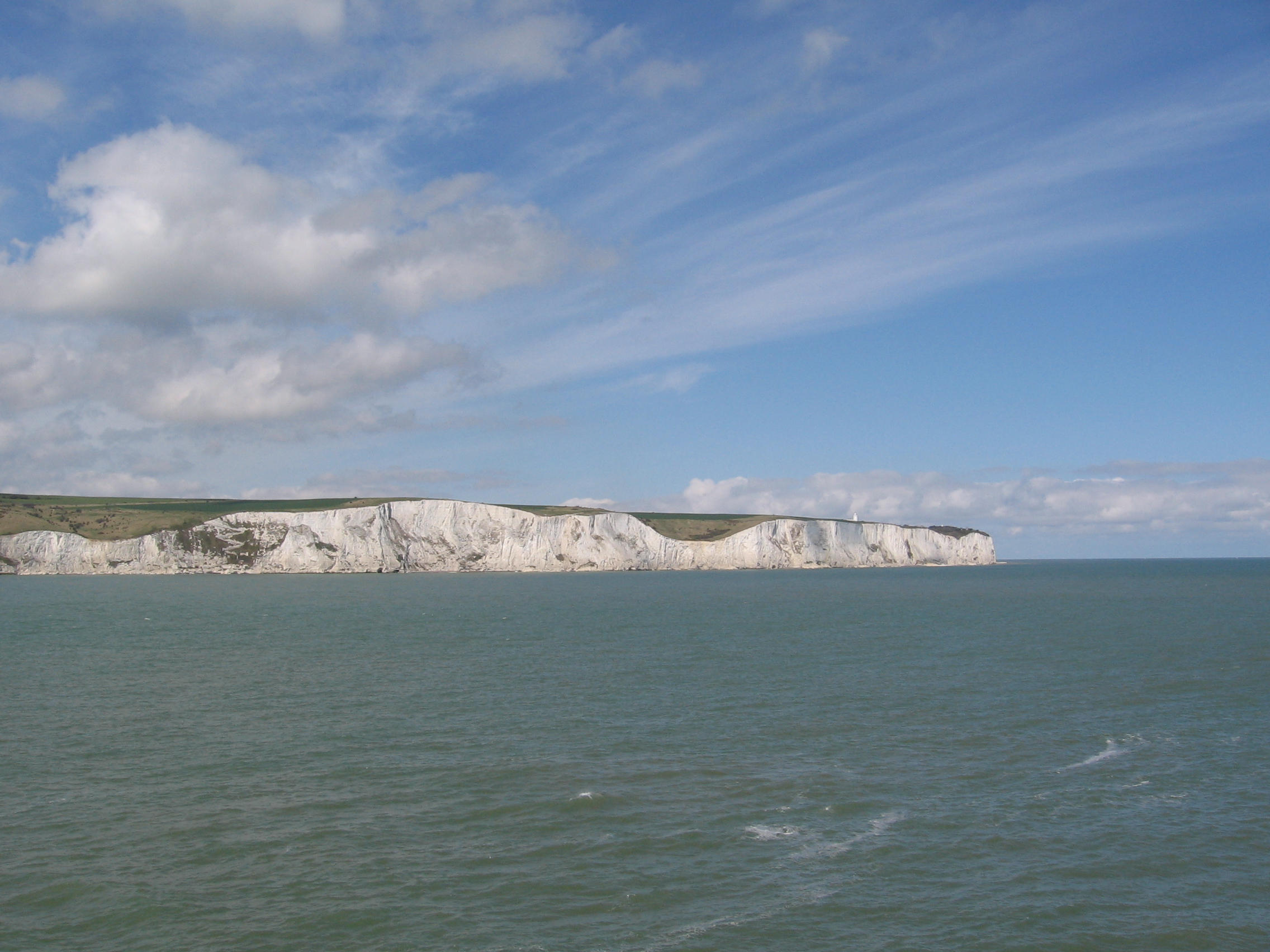Langdon Bay (Kent) on:
[Wikipedia]
[Google]
[Amazon]
 Langdon Bay is a
Langdon Bay is a
Hourly Met office weather observations from the Bay
{{coord, 51.1336, 1.3510, display=title, region:GB, format=dms Bays of Kent English Channel Dover District National Trust properties in Kent
 Langdon Bay is a
Langdon Bay is a bay
A bay is a recessed, coastal body of water that directly connects to a larger main body of water, such as an ocean, a lake, or another bay. A large bay is usually called a ''gulf'', ''sea'', ''sound'', or ''bight''. A ''cove'' is a small, ci ...
in east Kent
Kent is a Ceremonial counties of England, ceremonial county in South East England. It is bordered by Essex across the Thames Estuary to the north, the Strait of Dover to the south-east, East Sussex to the south-west, Surrey to the west, and Gr ...
, England. It is two miles east of the town of Dover
Dover ( ) is a town and major ferry port in Kent, southeast England. It faces France across the Strait of Dover, the narrowest part of the English Channel at from Cap Gris Nez in France. It lies southeast of Canterbury and east of Maidstone. ...
, and is named after the nearby villages of Langdon, East Langdon and West Langdon. The cliffs around it are known as the Langdon Cliffs. A prominent zig-zag path down the cliff-face is visible from the sea and connects with the National Trust path by means of a step ladder. An additional means of exit from the beach being a return on foot to St Margaret's Bay. At the far western end is a restricted area of the Port of Dover, and occasionally walkers will be escorted out by the Dover Port Police.
History
The bay is known for the Langdon Bay Hoard – a collection ofBronze Age
The Bronze Age () was a historical period characterised principally by the use of bronze tools and the development of complex urban societies, as well as the adoption of writing in some areas. The Bronze Age is the middle principal period of ...
metal objects found nearby in 1974. This includes bronze axes of a French type and is thought to represent the cargo of a boat that was caught in a storm just after leaving the English coast, either jettisoned to lighten and save the boat or sunk with it (if there was a wreck, it is now lost). This demonstrates that cross-channel trade
Trade involves the transfer of goods and services from one person or entity to another, often in exchange for money. Economists refer to a system or network that allows trade as a market.
Traders generally negotiate through a medium of cr ...
was already occurring in the Bronze Age, if not earlier. The hoard is owned by the British Museum
The British Museum is a Museum, public museum dedicated to human history, art and culture located in the Bloomsbury area of London. Its permanent collection of eight million works is the largest in the world. It documents the story of human cu ...
, but is on long-term loan and display in Dover Museum in Market Square, Dover.
Three searchlight batteries – known as the Langdon Lights – were built into the base of the bay's cliffs during World War II, so that any ship trying to enter the bay could be illuminated while it was checked, though one battery has since been destroyed by a cliff fall.
The area above the cliffs is now a chalk
Chalk is a soft, white, porous, sedimentary carbonate rock. It is a form of limestone composed of the mineral calcite and originally formed deep under the sea by the compression of microscopic plankton that had settled to the sea floor. Ch ...
downland
Downland, chalkland, chalk downs or just downs are areas of open chalk hills, such as the North Downs. This term is used to describe the characteristic landscape in southern England where chalk is exposed at the surface. The name "downs" is deriv ...
nature reserve
A nature reserve (also known as a wildlife refuge, wildlife sanctuary, biosphere reserve or bioreserve, natural or nature preserve, or nature conservation area) is a protected area of importance for flora, fauna, funga, or features of geologic ...
owned by the National Trust
The National Trust () is a heritage and nature conservation charity and membership organisation in England, Wales and Northern Ireland.
The Trust was founded in 1895 by Octavia Hill, Sir Robert Hunter and Hardwicke Rawnsley to "promote the ...
, looking down on Dover Harbour and the Channel, and centred on the 'Gateway to the White Cliffs' Visitor Centre
A visitor center or centre (see American and British English spelling differences), visitor information center or tourist information centre is a physical location that provides information to tourists.
Types
A visitor center may be a Civic c ...
. Large parts of this reserve, and of this section of clifftop in general, is an SSSI, AONB and Heritage Coast
A heritage coast is a strip of coastline in England and Wales, the extent of which is defined by agreement between the relevant statutory national agency and the relevant local authority. Such areas are recognised for their natural beauty, wildlife ...
. Another nearby historic site is the South Foreland Lighthouse, also a NT property.
Notes
External links
*https://web.archive.org/web/20040825152004/http://www.dover-kent.co.uk/places/langdon_cliffs.htm *https://web.archive.org/web/20110727015244/http://www.geog.sussex.ac.uk/BAR/images/Kent/langdon_stairs/Page.htmlHourly Met office weather observations from the Bay
{{coord, 51.1336, 1.3510, display=title, region:GB, format=dms Bays of Kent English Channel Dover District National Trust properties in Kent